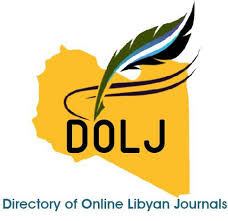Recent Advances in Dietary and Drug Treatment of Obesity: Review Paper
DOI:
https://doi.org/10.54361/LJMR.19.2.13Keywords:
overweigh, obesity, orlistat, liraglutide, semaglutide, tirzepatide, phentermine, topiramate, bupropion, naltrexoneAbstract
Obesity has become a major health problem and a worldwide concern, and its treatment is evolving. Several health risks are associated with obesity, such as hypertension, hyperlipidaemia, type 2 diabetes mellitus (T2DM), stroke, metabolic syndrome, asthma, and cancer. Unhealthy diet and lack of physical activity are major causes of obesity, but genetic or hormonal factors may also contribute. In order to reduce weight gain caused by excessive calorie intake and low physical activity, a number of pharmacological agents have been developed. These agents exert their action by different mechanisms, including inhibition of dietary fat absorption or stimulation of the secretion of satiety hormones. Particular agents such as sibutramine and rimonabant have been evaluated extensively and recommended for obesity treatment in several countries; however, they were ultimately withdrawn worldwide due to disappointing side effects. In contrast, various new drugs showed promising results and were approved by the FDA for the treatment of obesity. This review discusses the old and currently used anti-obesity drugs: liraglutide, semaglutide, tirzepatide, orlistat, as well as the phentermine/topiramate and bupropion/naltrexone combinations. Efficacy, indications, side effects, and contraindications of different classes of anti-obesity drugs will be reviewed comprehensively in this article.
Downloads
References
1. https://www.who.int/news-room/fact-sheets/detail/obesity-and-overweight
2. www.worldobesity.org
3. www.heart.org
4. Jamshed H, Steger FL, Bryan DR, Richman JS, Warriner AH, Hanick CJ. et al., Effectiveness of Early Time-Restricted Eating for Weight Loss, Fat Loss, and Cardiometabolic Health in Adults with Obesity: A Randomized Clinical Trial. JAMA Intern Med. 2022 Sep 1;182(9):953-962. doi: 10.1001/jamainternmed.2022.3050. PMID: 35939311; PMCID: PMC9361187.
5. Landry MJ, Crimarco A, Gardner CD. Benefits of Low Carbohydrate Diets: a Settled Question or Still Controversial? Curr Obes Rep. 2021 Sep;10(3):409-422. doi: 10.1007/s13679-021-00451-z. Epub 2021 Jul 23. PMID: 34297345; PMCID: PMC9621749.
6. John C. Linton, Larry James. Handbook of obesity Intervention for the lifespan. 1st edition. Springer. 2009.
7. https://www.uptodate.com/contents/obesity-in-adults-dietary-therapy
8. Jayedi A, Soltani S, Emadi A, Zargar MS, Najafi A. Aerobic Exercise and Weight Loss in Adults: A Systematic Review and Dose-Response Meta-Analysis. JAMA Netw Open. 2024 Dec 2;7(12): e2452185. doi: 10.1001/jamanetworkopen.2024.52185. PMID: 39724371; PMCID: PMC11672165.
9. Powell A. Obesity: Pharmacotherapy. FP Essent. 2020 May; 492:25-29. PMID: 32383845.
10. Tziomalos K, Krassas GE, Tzotzas T. The use of sibutramine in the management of obesity and related disorders: an update. Vasc Health Risk Manag. 2009;5(1):441-52. doi: 10.2147/vhrm. s4027. PMID: 19475780; PMCID: PMC2686261.
11. Curioni C, André C. Rimonabant for overweight or obesity. Cochrane Database Syst Rev. 2006 Oct 18;2006(4):CD006162. doi: 10.1002/14651858.CD006162.pub2. PMID: 17054276; PMCID: PMC8990787.
12. Heck AM, Yanovski JA, Calis KA. Orlistat, a new lipase inhibitor for the management of obesity. Pharmacotherapy. 2000 Mar;20(3):270-9. doi: 10.1592/phco.20.4.270.34882. PMID: 10730683; PMCID: PMC6145169.
13. Torgerson JS, Hauptman J, Boldrin MN, Sjöström L. XENical in the prevention of diabetes in obese subjects (XENDOS) study: a randomized study of orlistat as an adjunct to lifestyle changes for the prevention of type 2 diabetes in obese patients. Diabetes Care. 2004 Jan;27(1):155-61. doi: 10.2337/diacare.27.1.155. Erratum in: Diabetes Care. 2004 Mar;27(3):856. PMID: 14693982.
14. Chakhtoura M, Haber R, Ghezzawi M, Rhayem C, Tcheroyan R, Mantzoros CS. Pharmacotherapy of obesity: an update on the available medications and drugs under investigation. EClinicalMedicine. 2023 Mar 20; 58:101882. doi: 10.1016/j.eclinm.2023.101882. PMID: 36992862; PMCID: PMC10041469.
15. Acosta A, Camilleri M, Abu Dayyeh B, Calderon G, Gonzalez D, McRae A, et al. Selection of Antiobesity Medications Based on Phenotypes Enhances Weight Loss: A Pragmatic Trial in an Obesity Clinic. Obesity (Silver Spring). 2021 Apr;29(4):662-671. doi: 10.1002/oby.23120. Erratum in: Obesity (Silver Spring). 2021 Sep;29(9):1565-1566. doi: 10.1002/oby.23236. Erratum in: Obesity (Silver Spring). 2022 Jul;30(7):1521. doi: 10.1002/oby.23498. PMID: 33759389; PMCID: PMC8168710.
16. Gudzune KA, Kushner RF. Medications for Obesity: A Review. JAMA. 2024 Aug 20;332(7):571-584. doi: 10.1001/jama.2024.10816. PMID: 39037780.
17. Telci Caklili O, Cesur M, Mikhailidis DP, Rizzo M. Novel Anti-Obesity Therapies and their Different Effects and Safety Profiles: A Critical Overview. Diabetes Metab Syndr Obes. 2023 Jun 14; 16:1767-1774. doi: 10.2147/DMSO.S392684. PMID: 37337548; PMCID: PMC10277000.
18. Friedman JM. Leptin and the endocrine control of energy balance. Nat Metab. 2019 Aug;1(8):754-764. doi: 10.1038/s42255-019-0095-y. Epub 2019 Aug 12. PMID: 32694767.
19. Engin A. The Mechanism of Leptin Resistance in Obesity and Therapeutic Perspective. Adv Exp Med Biol. 2024; 1460:463-487. doi: 10.1007/978-3-031-63657-8_16. PMID: 39287862.
20. Sinha G. Leptin therapy gains FDA approval. Nat Biotechnol. 2014 Apr;32(4):300-2. doi: 10.1038/nbt0414-300b. PMID: 24714458.
21. Zhang Y, Proenca R, Maffei M, Barone M, Leopold L, Friedman JM. Positional cloning of the mouse obese gene and its human homologue. Nature. 1994 Dec 1;372(6505):425-32. doi: 10.1038/372425a0. Erratum in: Nature 1995 Mar 30;374(6521):479. PMID: 7984236.
22. Billes SK, Sinnayah P, Cowley MA. Naltrexone/bupropion for obesity: an investigational combination pharmacotherapy for weight loss. Pharmacol Res. 2014 Jun; 84:1-11. doi: 10.1016/j.phrs.2014.04.004. Epub 2014 Apr 19. PMID: 24754973.
23. Morton GJ, Cummings DE, Baskin DG, Barsh GS, Schwartz MW. Central nervous system control of food intake and body weight. Nature. 2006 Sep 21;443(7109):289-95. doi: 10.1038/nature05026. PMID: 16988703.
24. Greenway FL, Dunayevich E, Tollefson G, Erickson J, Guttadauria M, Fujioka K, et al; NB-201 Study Group. Comparison of combined bupropion and naltrexone therapy for obesity with monotherapy and placebo. J Clin Endocrinol Metab. 2009 Dec;94(12):4898-906. doi: 10.1210/jc.2009-1350. Epub 2009 Oct 21. PMID: 19846734.
25. Smith SR, Fujioka K, Gupta AK, Billes SK, Burns C, Kim D, et al. Combination therapy with naltrexone and bupropion for obesity reduces total and visceral adiposity. Diabetes Obes Metab. 2013 Sep;15(9):863-6. doi: 10.1111/dom.12095. Epub 2013 Apr 5. PMID: 23489381.
26. Liu QK. Mechanisms of action and therapeutic applications of GLP-1 and dual GIP/GLP-1 receptor agonists. Front Endocrinol (Lausanne). 2024 Jul 24; 15:1431292. doi: 10.3389/fendo.2024.1431292. PMID: 39114288; PMCID: PMC11304055.
27. Pi-Sunyer X, Astrup A, Fujioka K, Greenway F, Halpern A, Krempf M, et al; SCALE Obesity and Prediabetes NN8022-1839 Study Group. A Randomized, Controlled Trial of 3.0 mg of Liraglutide in Weight Management. N Engl J Med. 2015 Jul 2;373(1):11-22. doi: 10.1056/NEJMoa1411892. PMID: 26132939.
28. Marso SP, Daniels GH, Brown-Frandsen K, Kristensen P, Mann JF, Nauck MA, et al; LEADER Steering Committee; LEADER Trial Investigators. Liraglutide and Cardiovascular Outcomes in Type 2 Diabetes. N Engl J Med. 2016 Jul 28;375(4):311-22. doi: 10.1056/NEJMoa1603827. Epub 2016 Jun 13. PMID: 27295427; PMCID: PMC4985288.
29. Lee J, Kim R, Kim MH, Lee SH, Cho JH, Lee JM, Jang SA, Kim HS. Weight loss and side-effects of liraglutide and lixisenatide in obesity and type 2 diabetes mellitus. Prim Care Diabetes. 2023 Oct;17(5):460-465. doi: 10.1016/j.pcd.2023.07.006. Epub 2023 Aug 3. PMID: 37541792.
30. Tan HC, Dampil OA, Marquez MM. Efficacy and Safety of Semaglutide for Weight Loss in Obesity Without Diabetes: A Systematic Review and Meta-Analysis. J ASEAN Fed Endocr Soc. 2022;37(2):65-72. doi: 10.15605/jafes.037.02.14. Epub 2022 Aug 23. PMID: 36578889; PMCID: PMC9758543.
31. O'Neil PM, Birkenfeld AL, McGowan B, Mosenzon O, Pedersen SD, Wharton S, et al. Efficacy and safety of semaglutide compared with liraglutide and placebo for weight loss in patients with obesity: a randomised, double-blind, placebo and active controlled, dose-ranging, phase 2 trial. Lancet. 2018 Aug 25;392(10148):637-649. doi: 10.1016/S0140-6736(18)31773-2. Epub 2018 Aug 16. PMID: 30122305.
32. Garvey WT, Frias JP, Jastreboff AM, le Roux CW, Sattar N, Aizenberg D, et al; SURMOUNT-2 investigators. Tirzepatide once weekly for the treatment of obesity in people with type 2 diabetes (SURMOUNT-2): a double-blind, randomised, multicentre, placebo-controlled, phase 3 trial. Lancet. 2023 Aug 19;402(10402):613-626. doi: 10.1016/S0140-6736(23)01200-X. Epub 2023 Jun 26. PMID: 37385275.
33. Coskun T, Sloop KW, Loghin C, Alsina-Fernandez J, Urva S, Bokvist KB, et al. LY3298176, a novel dual GIP and GLP-1 receptor agonist for the treatment of type 2 diabetes mellitus: From discovery to clinical proof of concept. Mol Metab. 2018 Dec;18:3-14. doi: 10.1016/j.molmet.2018.09.009. Epub 2018 Oct 3. PMID: 30473097; PMCID: PMC6308032.
34. Aronne LJ, Sattar N, Horn DB, Bays HE, Wharton S, Lin WY, et al; SURMOUNT-4 Investigators. Continued Treatment with Tirzepatide for Maintenance of Weight Reduction in Adults With Obesity: The SURMOUNT-4 Randomized Clinical Trial. JAMA. 2024 Jan 2;331(1):38-48. doi: 10.1001/jama.2023.24945. PMID: 38078870; PMCID: PMC10714284.
35. Inagaki N, Takeuchi M, Oura T, Imaoka T, Seino Y. Efficacy and safety of tirzepatide monotherapy compared with dulaglutide in Japanese patients with type 2 diabetes (SURPASS J-mono): a double-blind, multicentre, randomised, phase 3 trial. Lancet Diabetes Endocrinol. 2022 Sep;10(9):623-633. doi: 10.1016/S2213-8587(22)00188-7. Epub 2022 Jul 30. PMID: 35914543.
Downloads
Published
Issue
Section
License
Copyright (c) 2025 Sulaiman A. Essa, Husam S. Alganga, Najah A. Ebrahim (Author)

This work is licensed under a Creative Commons Attribution-NonCommercial-NoDerivatives 4.0 International License.
Open Access Policy
Libyan journal of medical Research (LJMR).is an open journal, therefore there are no fees required for downloading any publication from the journal website by authors, readers, and institution.
The journal applies the license of CC BY (a Creative Commons Attribution 4.0 International license). This license allows authors to keep ownership f the copyright of their papers. But this license permits any user to download , print out, extract, reuse, archive, and distribute the article, so long as appropriate credit is given to the authors and the source of the work.
The license ensures that the article will be available as widely as possible and that the article can be included in any scientific archive.
Editorial Policy
The publication of an article in a peer reviewed journal is an essential model for Libyan journal of medical Research (LJMR). It is necessary to agree upon standards of expected ethical behavior for all parties involved in the act of publishing: the author, the journal editorial, the peer reviewer and the publisher.
Any manuscript or substantial parts of it, submitted to the journal must not be under consideration by any other journal. In general, the manuscript should not have already been published in any journal or other citable form, although it may have been deposited on a preprint server. Authors are required to ensure that no material submitted as part of a manuscript infringes existing copyrights, or the rights of a third party.
Authorship Policy
The manuscript authorship should be limited to those who have made a significant contribution and intellectual input to the research submitted to the journal, including design, performance, interpretation of the reported study, and writing the manuscript. All those who have made significant contributions should be listed as co-authors.
Others who have participated in certain substantive aspects of the manuscript but without intellectual input should only be recognized in the acknowledgements section of the manuscript. Also, one of the authors should be selected as the corresponding author to communicate with the journal and approve the final version of the manuscript for publication in the LJMR.
Peer-review Policy
- All the manuscripts submitted to LJMR will be subjected to the double-blinded peer-review process;
- The manuscript will be reviewed by two suitable experts in the respective subject area.
- Reports of all the reviewers will be considered while deciding on acceptance/revision or rejection of a manuscript.
- Editor-In-Chief will make the final decision, based on the reviewer’s comments.
- Editor-In-Chief can ask one or more advisory board members for their suggestions upon a manuscript, before making the final decision.
- Associate editor and review editors provide administrative support to maintain the integrity of the peer-review process.
- In case, authors challenge the editor’s negative decision with suitable arguments, the manuscript can be sent to one more reviewer and the final decision will be made based upon his recommendations.














